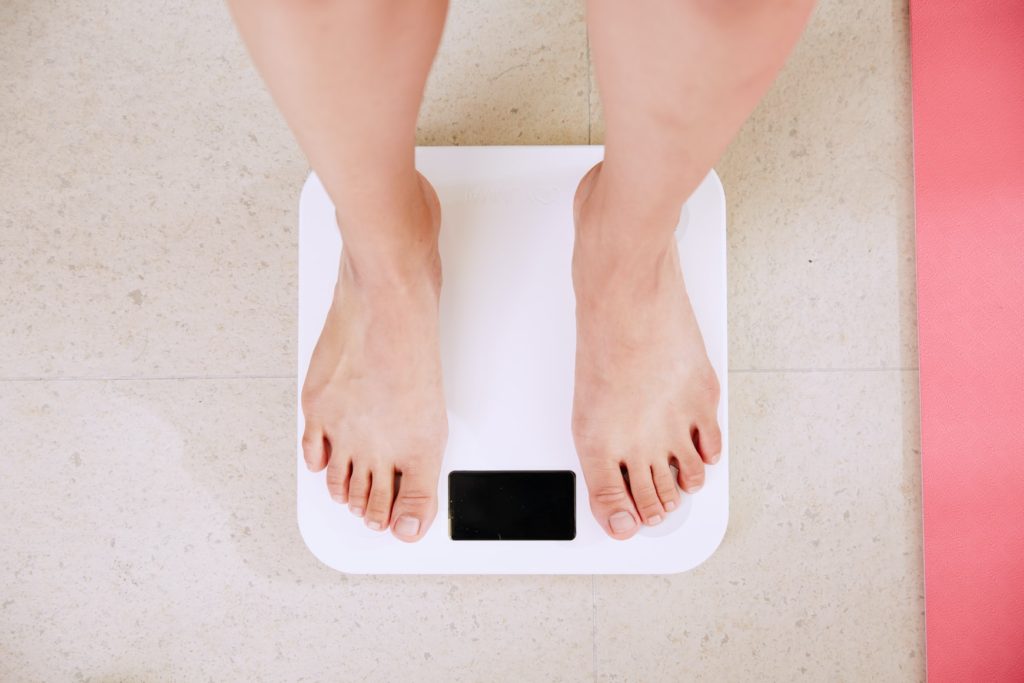
“There are two different approaches to bulking that most individuals choose to take, and whichever you choose will directly impact the speed at which you gain weight.”
Whether you’re in a hurry to put on some weight, or you are gaining too fast and wondering if it’s safe, it’s good to know how fast weight gain should occur. But there are some other questions to answer first, such as: Are there side effects of rapid weight gain? And, what to do if you suddenly stop gaining?
It’s important to educate yourself, and if you’re planning on putting on some muscle/fat to bulk up, it’s imperative that you have a solid outline and direction to rely on. Without further ado, here is: How Fast Should a Hardgainer Gain Weight?
How fast can you gain weight?
To begin this answer in a more comical way, I surfed around google looking for the world record for the most weight gained in a week or month. I quickly got uncomfortable reading numbers like 46lbs in a week and 278 pounds in 6 weeks. So, let’s just say that the literal answer to the question is not relevant.
To be more specific, the question should be: How fast can a skinny guy put on an appropriate amount of weight? And as always, in the world of health and fitness, the answer is: it depends.
Everyone is a little bit different, so things like metabolism and food processing are going to vary. Obviously, you’re going to have to eat in a caloric surplus to gain weight. You may have heard that 3500 calories equate to one pound of weight gained. This isn’t true enough to be a hard rule but is a very good approximate metric. So if you can try for a surplus of ~3500 calories a week, or ~500 a day, then you can expect to gain somewhere near 1lb a week.
From here you can do the math and figure out what it’s going to take to gain 2lbs a week, or even more than that. You can see that it quickly becomes very difficult to realistically gain more than a pound or two a week. And that’s ok because rapid weight gain is not fun.
The risk of rapid weight gain

If you have a BMI of 18.5-24.9, then you are at a healthy weight, and gaining more is probably going to feel like crap. If you’re underweight, gaining weight is going to feel good.
But once again, everyone is different and you should experiment and see for yourself if you feel better at higher body weight. If you do decide to do so, you should gain weight slowly, since rapid weight gain can be dangerous.
Being overweight is obviously a bad thing. It puts so much stress on your body and the systems of your body that your health is greatly compromised. Once you are overweight, you’re at risk for:
-Insulin resistance
-Type 2 diabetes
-Metabolic syndrome
-Poor digestion
-Poor dietary habits
If you push yourself to gain weight quickly, you can change the way you eat. For some, it is a slippery slope. Soda, chips, and other junk food can be difficult to kick once the habit sets in. The reason we’re hardgainers is due to poor eating habits, and if you don’t gain weight in a smart way, you’ll just find yourself in the same struggle, but overweight.
Rapid weight gain can also be expensive. Food can hit your wallet hard if you’re doubling the amount of food you eat, especially today with rapid inflation. And it’s not just food you have to worry about, you’re going to need new clothes.
Yes, that’s right, a new wardrobe. As a hardgainer, not fitting into your old clothes has likely never been an issue for you. If you experience high levels of weight gain, be prepared to buy new clothes.
One last risk of rapid weight gain is stretch marks.
Stretch marks

A stretch mark is a type of scar that forms when the skin stretches or shrinks quickly. Not everyone will experience stretch marks. When it comes to bodybuilding and weight gaining, stretch marks are prominent.
Perhaps you didn’t realize it, but stretch marks can occur after quick muscle growth. Personally, I got stretch marks on my inner thighs when I first started squatting multiple times a week, even though I was a skinny person.
Some see stretch marks as a sort of trophy, that they grew muscle so quickly that they earned these hardened battle scars. Others, see them as ugly and try to get rid of them with creams. If you gain weight quickly, whether it’s muscle or fat, stretch marks are something to look out for.
Bulk vs. lean bulk

So you’re going to gain some weight. That means that you’ll be bulking. Great, but have you considered how exactly you’re going to plan this bulk?
There are two different approaches to bulking that most individuals choose to take, and whichever you choose will directly impact the speed at which you gain weight.
We’re referring to the healthy-but-slow vs. dirty-but-fast methods. And I’ll tell you right now, this is a classic tortoise vs the hare scenario. The individual who bulks slowly, focusing on clean and healthy dietary choices, will always come out on top.
So, the dirty bulk. Also known as dreamer bulking or the “see-food” diet, this is a method of weight gain where one eats everything they possibly can. Ok, to be fair, it can be much more intelligent than that. But most people just gorge themselves like a glutton and gain weight. This can work, but it’s wildly unhealthy and you’ll end up with more fat than you desire.
A clean bulk, similar to a lean bulk, is the opposite idea, where someone very meticulously chooses select healthy foods to bulk with. This diet usually revolves around plenty of fruits and vegetables and is often more challenging to execute. To reduce fat gain, a smaller caloric surplus is usually observed, such as a 200-300 daily surplus. Over time, the individual gains quality muscle with minimal fat.
Of course, these are just two extreme ends of the spectrum and anyone can fall anywhere in between. The reason why I chose to outline this is to demonstrate the relationship between healthy bulking and weight gain.
It seems as though the healthier the bulk, the higher quality the weight gained is. And the slower the bulk, the more favorable the muscle-to-fat ratio is.
If you’re wondering how fast you can gain weight, you should also ask yourself how much fat you can tolerate.
Hitting a plateau
Hitting plateaus is not uncommon in the weight room. You may have stalled on your bench press, unable to add more weight to the bar. This is easily remedied by locating and correcting errors in one’s programming. But what do you do when your bulk stalls?
There are a few different reasons why one may hit a plateau during their weight gaining phase. Of course, tracking your calories can usually correct the issue. If not, it’s still the first step.
When we gain weight, we are adding mass to our bodies, and every cell we add is going to take up just a little bit more energy to complete its processes. After a certain amount of time, the 200 calorie surplus isn’t going to cut it anymore because it is simply no longer a surplus. This is good news, really, because that means you’ve effectively gained weight.
If you stall during a bulk, add more calories.
I remember when I was a teenager, an intake of 2500 calories a day was an honest challenge for me. And it took years to master. Now, just my maintenance is over 3,000 calories a day. It may sound exhausting, but your body gets used to it and requires that amount of food to function at a high level.
What’s muscle and what’s fat?
If you’re gaining weight, you might be wondering if you’re putting on fat or muscle, or maybe both. The first thing to know is that muscle usually comes with some fat, and that’s ok. However, muscle doesn’t always come with fat.
If you’re training consistently and at least trying to eat healthily, you’re probably putting on some muscle. The pure fat gain comes from a sedentary lifestyle and poor dietary choices.
As you already know, fat and muscle cant be discerned by the scale. If you gain 10lbs, you don’t know exactly what that 10lbs is comprised of. Taking photos can help, and measurements too. Another tip is to calculate your body fat percentage.
When you’re learning to find your body fat percentage, you have three options: Calipers, scales, and photos.
You can buy special calipers designed specifically for finding body fat percentages. If you do buy some, watch some youtube videos and learn exactly how to use them. There are certain skinfold areas to test, and not following the instructions will yield inaccurate results. An individual who’s well trained with calipers can be extremely accurate in finding body fat percentages.
Some electronic scales can calculate your body fat percentage when you stand on them to weigh yourself. The accuracy varies greatly with these, and the quality of the scale can play a big part here. You’ll notice that these scales have two metal contacts that you must stand on bare-foot in order for the calculation to take place. This is accomplished by sending a small electrical current through you, and calculating the data as it returns. Electricity always takes the path of least resistance, and so the current travels up one leg and down the other, never passing through your abdomen or upper body. For this reason, the body fat estimation on these scales is accurate only to your lower body. This isn’t a bad thing, but everyone should be aware of how this mechanism works.
The least reliable but cheapest and quickest way to find your body fat percentage is to take a photo of yourself and compare it to other photos online. Google search a term similar to, “Body fat percentage photos” and you’ll find some examples to compare yourself to.
Of course, there are more expensive options such as a DEXA scan or fancy body fat calculator scanners. Some personal trainers have these body fat scanners and offer a service, so check your local gyms.
Thank you for making it to the end of the article, I appreciate you taking the time to read this. If you want to support me or support the website, consider sharing this post or telling your friends about us.